When you think of "underground" attractions, spots that are hip and under-the-radar probably come to mind first. Well, allow us to change your train of thought for a moment with some mind-blowing sites that are, quite literally, under the surface. Spanning the globe, some of these clandestine spaces are manmade while others have naturally formed over thousands of years. So without further ado -- from an underground salt mine with a mini-golf course to an abandoned subterranean city, discover what lies beneath.
Reed Flute Cave, China
Photo courtesy of Flickr/Bernt Rostad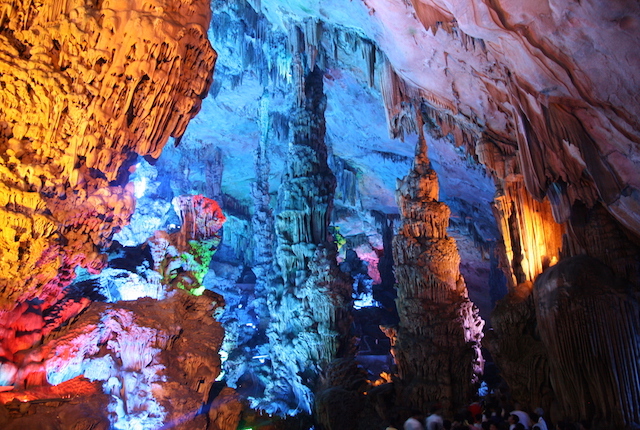
Located approximately three miles northwest of Guilin, this 787-foot-long, 180 million-year-old natural limestone labyrinth gets its name for the type of reeds that grow outside. Inside, multi-colored lights illuminate the already impressive array of stalagmites and stalactites. Join the more than 1,200 annual tourists who trek down here to witness over 70 inscriptions that date as far back as 792 AD and marvel at the phenomenal formations that go by charming names like “Pines in the Snow” and “Mushroom Hill.”
Catacombs of Paris
Photo courtesy of Flickr/Tobias F. Wolf
You’ve braved haunted houses and visited abandoned ghost towns, but you haven’t experienced spooky until you’ve toured the tunnels of the Catacombs of Paris. Dubbed the world’s largest grave, the 200-mile subterranean network consists of six million skeletons that are eerily, yet artistically arranged. Exhumed due to overcrowding in cemeteries, the carefully curated skulls and bones are unlike anything else you’ll see in the City of Love.
Salina Turda, Romania
Photo courtesy of Flickr/Cristian Bortes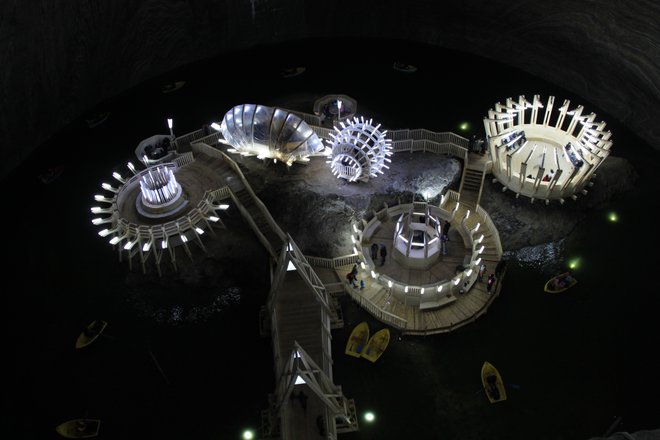
Located beneath the surface in Transylvania, the massive Salina Turda is basically a giant playground nestled inside a really, really old salt mine. Descend nearly 400 feet and you’ll reach a museum, mini-golf course, Ferris wheel, and underground lake for boating. While some stop by for the history and fun-filled activities, others visit for the site’s health benefits. Inhaling the salt-rich air is said to help those suffering from asthma and allergies.
Derinkuyu Underground City, Turkey
Photo courtesy of Flickr/jyl4032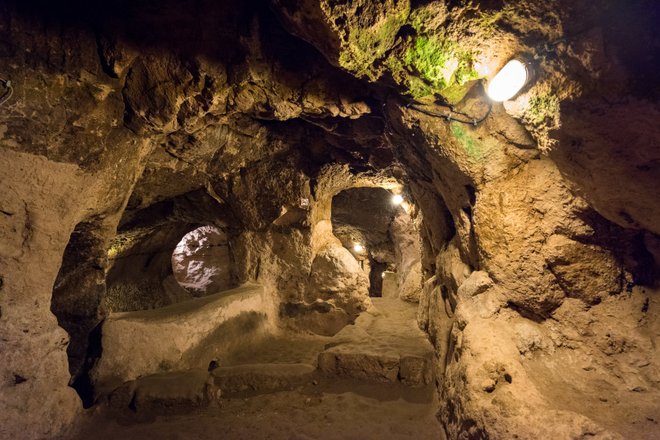
It might not look like it now, but thousands of years ago this multi-level underground city once consisted of homes, wine cellars, chapels, stables, and more. With a maze of tunnels that connect to other underground cities, it sheltered as many as 20,000 people in its heyday and protected them from invasions. Today, the now-abandoned 200-foot-deep space, which also happens to be the largest excavated underground city in Turkey, makes for a surreal tourist stop.
Thrihnukagigur Volcano, Iceland
Photo courtesy of Flickr/Darren Mercer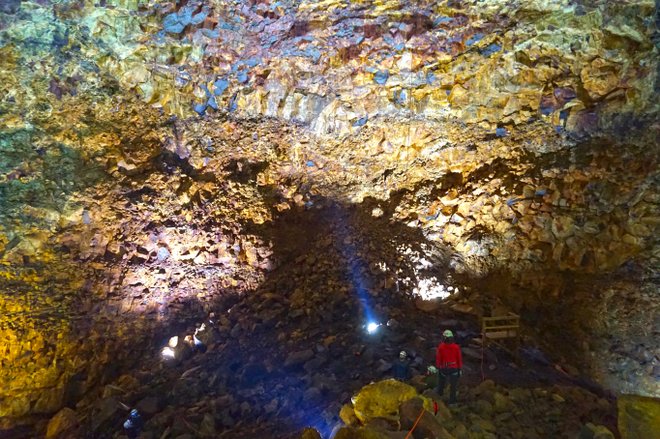
You may have hiked a volcano, but have you ever been inside one? Perched near Reykjavik, Thrihnukagigur Volcano, which last erupted 4,000 years, safely welcomes visitors to do just that. First, hike through lava fields and marvel at the colorful minerals that surround you. Then, strap on a helmet and harness, hop into an open-air elevator, and prepare to drop 400 feet in six minutes into the volcano’s magma chamber. After taking the plunge, you’ll have time to explore and snap plenty of pics.
Basilica Cistern, Turkey
Photo credit courtesy of Flickr/Dennis Jarvis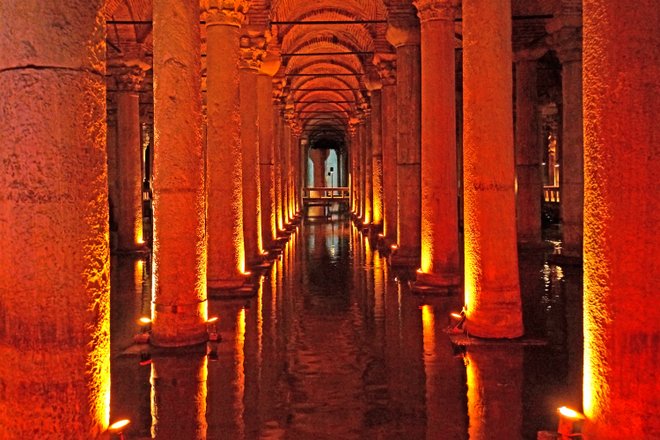
Located a short distance from the Hagia Sophia, this structure, which was built by Byzantine emperor Justinian I, is the largest surviving cistern in Istanbul. So large that it can hold 100,000 tons of water. In fact, in its past life, it was used for collecting and supplying drinking water. Today, visitors can walk through the 336 marble columns and spot the two that feature carved Medusa heads at the base. But don’t expect to find a ton of H2O here these days — there’s only a few feet at the bottom.
Cave of the Crystals, Mexico
https://www.instagram.com/p/4CcKbvFppu
While pumping water out of the cave in the Naica Mine near Chihuahua, miners stumbled upon something unlike anything else in the world: giant selenite crystals, some of the largest natural crystals in the world. The bad news: With 100 percent humidity and intensely high temperatures that touch 136 degrees, visits to the 1,000-foot underground site are tough, if not impossible.
Mayakovskaya, Russia
Photo courtesy of Flickr/Tim Adams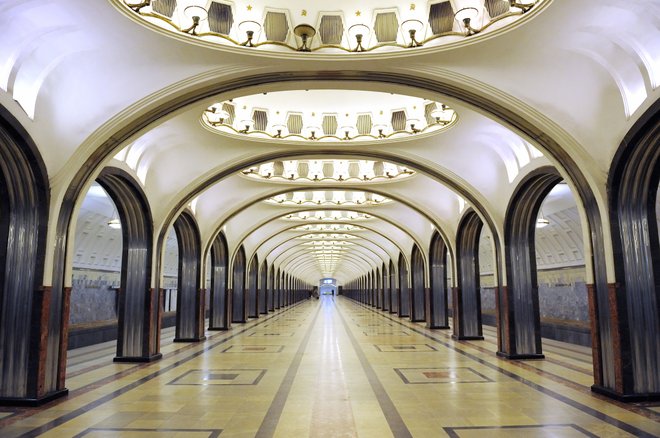
Part-transportation hub, part-museum, Moscow’s subway system spotlights marble-lined columns, dramatic arches, mosaics, and more. Each one is more beautiful than the next (Komsomolskaya features chandeliers while Novoslobodskaya comes with stained-glass panels), but Mayakoskaya deserves a special shout-out. Tucked about 108 feet underground, the station formerly housed an air raid shelter during World War II. Today, a white-and-pink marble floor pattern, 34 ceiling mosaics, and columns with stainless steel and pink rhodonite make for a beautiful commute.
Wieliczka Salt Mine, Poland
Photo courtesy of Flickr/Anna & Michal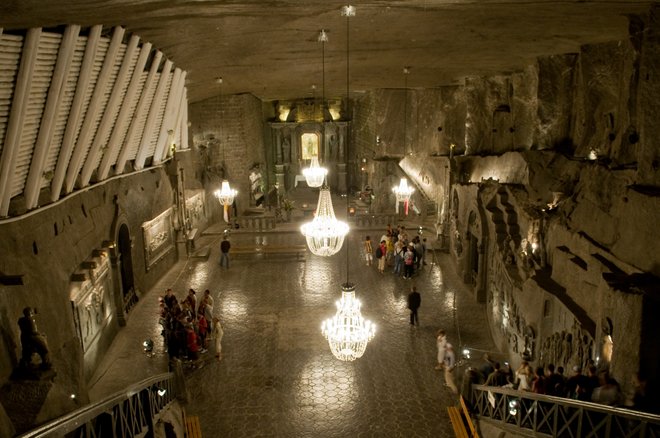
More than one million people visit this UNESCO World Heritage site to see it in all its salty subterranean glory. Located just outside Krakow, the 13th-century salt mine now houses chapels, a wellness center, grandiose chandeliers, and statutes — all chiseled from salt. Even cooler is the guest book, which serves as proof that Copernicus, Goethe, and President Bill Clinton have all stopped by.
Dos Ojos and Ik Kil, Mexico
Photo courtesy of Flickr/Vicente Villamón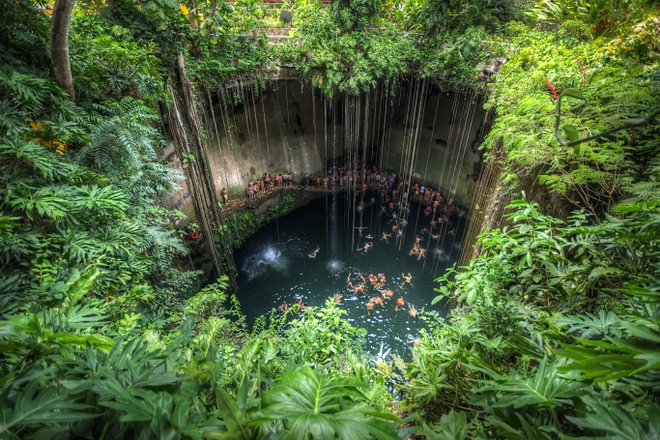
Found in Mexico’s Yucatan Peninsula, cenotes are natural, water-filled sinkholes that form when limestone collapses. Although the Yucatan Peninsula boasts about 7,000 different cenotes, Ik Kil and Dos Ojos are two that visitors shouldn’t miss. A short drive from the Mayan ruins, the former is a 130-foot blue pool offers a cool respite from the heat. The latter, which translates to “Two Eyes,” is deeper — 350 feet, to be more exact — and makes for a perfect retreat for seasoned snorkelers and scuba divers.
Related Stories:
- 8 Grottos You Have to See to Believe
- 10 Jaw-Droppingly Eerie Ghost Towns Around the World
- The 7 Most Underrated Landmarks in the U.S.
All products are independently selected by our writers and editors. If you buy something through our links, Oyster may earn an affiliate commission.



